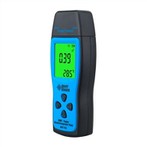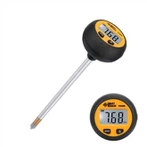1. Single-ended flyback switching power supply
Single-ended means that the magnetic core of the high-frequency converter only works on one side of the hysteresis loop. Flyback means that when the switch tube VT1 is turned on, the induced voltage of the primary winding of the high-frequency transformer T is positive up and negative down, and the rectifier diode VD1 is in the cut-off state, storing energy in the primary winding. When the switch tube VT1 is cut off, the energy stored in the primary winding of the transformer T is output to the load after being rectified by the secondary winding and VD1 and filtered by the capacitor C.
This is a low-cost power supply circuit with an output power of 20-100W. However, the output ripple voltage is relatively large and the external characteristics are poor, so it is suitable for relatively fixed loads.
2. Single-ended forward switching power supply
This circuit is similar in form to a single-ended flyback circuit, but operates differently. When the switch tube VT1 is turned on, VD2 is also turned on. At this time, the grid transmits energy to the load, and the filter inductor L stores energy; when the switch tube VT1 is turned off, the inductor L continues to release energy to the load through the freewheeling diode VD3. This kind of power supply has a large output power range, and can output power of 50-200 W, but the transformer of the circuit has a complex structure and a large volume, so the practical application of this kind of circuit is seldom.
3. Self-excited switching regulated power supply
This is a switching power supply composed of an intermittent oscillating circuit, and it is one of the basic power supplies widely used at present. Like a single-ended flyback switching power supply, the secondary winding of the transformer T outputs the required voltage to the load. The switching tube in the self-excited switching power supply plays the dual role of switching and oscillation, and the control circuit is also omitted. In the circuit, because the load is located at the secondary side of the transformer and works in a flyback state, it has the advantages of mutual isolation between input and output. This circuit is not only suitable for high-power power supply, but also for low-power power supply.
4. Push-pull switching power supply
It belongs to the double-ended conversion circuit, and the magnetic core of the high-frequency transformer works on both sides of the hysteresis loop. The circuit uses two switch tubes VT1 and VT2, and the two switch tubes are turned on and off alternately under the control of the external excitation square wave signal, and the square wave voltage is obtained in the secondary group of the transformer T, which is converted into the required DC through rectification and filtering. Voltage. Advantages: two switching tubes are easy to drive. The output power of the circuit is relatively large, generally in the range of 100-500 W.






